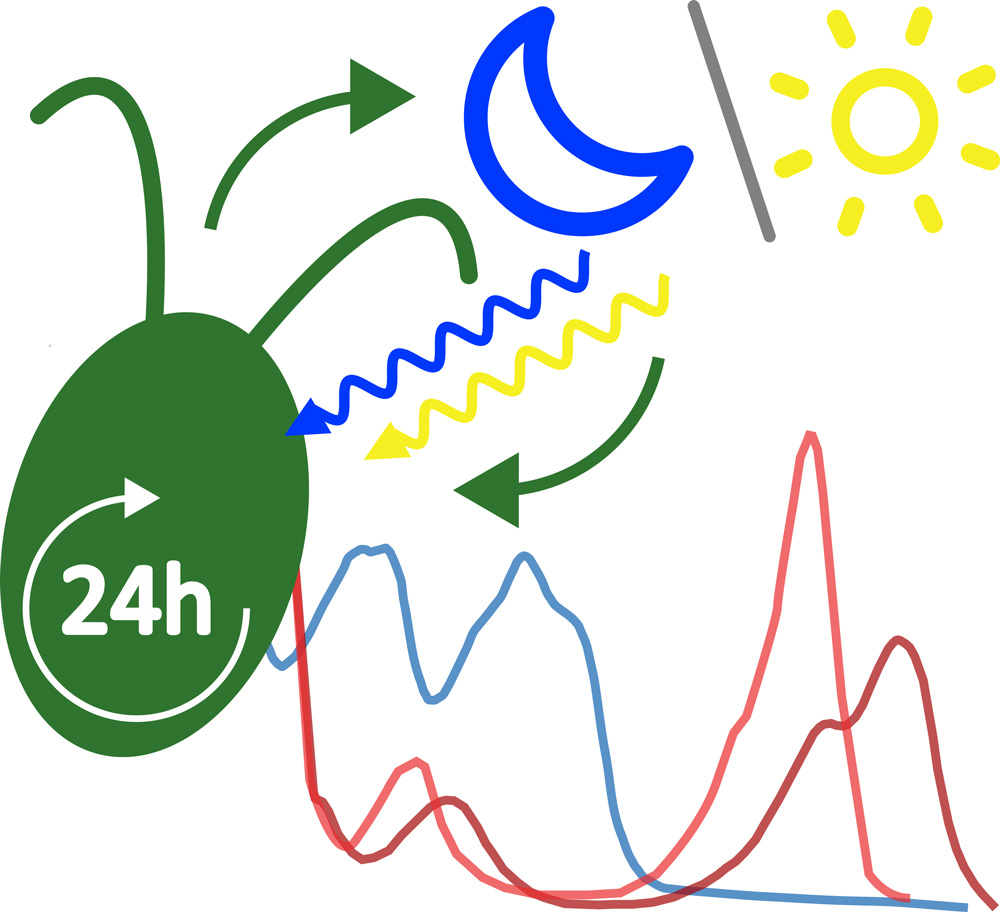Unveiling Circadian Function of Photoreceptors in Plants
Darius Rauch — Hector Fellow Peter Hegemann
My doctoral project focuses on identifying light-sensitive proteins called photoreceptors in the model organism Chlamydomonas reinhardtii. I aim to answer how these receptors regulate the inner biological clock known as the circadian rhythm. My major focus is to determine the properties of an unknown red light-sensitive photoreceptor and how this receptor regulates the clock. These insights can be used to understand how plants, in general, process light information.
The different behaviour of animals and humans during the day and night is regulated by an inner biological clock called the circadian rhythm. This rhythm is represented within cells through the time-dependent abundance of proteins. Not only animals but also plants possess such a rhythm. Plant processes like photosynthesis are synchronized to the rotation of the planet Earth. In plants, this synchronization is maintained through light signals being passed to the oscillating proteins that make up the biological clock. This information is transmitted through proteins called photoreceptors.
My doctoral project focuses on investigating how these photoreceptors function and how they interact with the circadian system. To this end, I am utilizing the unicellular algae Chlamydomonas reinhardtii as a model organism to investigate how photoreceptor mutations affect the circadian rhythm. Following this approach, I have already identified the plant-like cryptochrome pCRY as an essential photoreceptor regulating the circadian system. My research has also shown that a newly uncharacterized red light-sensitive photoreceptor regulates the clock. During my doctoral project, I will characterize this novel red-light receptor and uncover how it is integrated into the circadian rhythm.
I will contextualize these findings within the broader topic of how plants regulate light, a subject that gains increasing relevance in the face of climate change and intensifying droughts
The 24 hour circadian rhythm of the alga Clamydomonas reinhardtii (green, left) is maintained through different light signals during the day and night (indicated by moon and sun). These signals are transmitted by photoreceptors which have different light sensitivities. Thes sensitivities are indicated by the photoreceptor absorption spectra in the background.

Darius Rauch
Humboldt-Universität zu BerlinSupervised by

Peter Hegemann
Biology, Chemistry & MedicineHector Fellow since 2015

